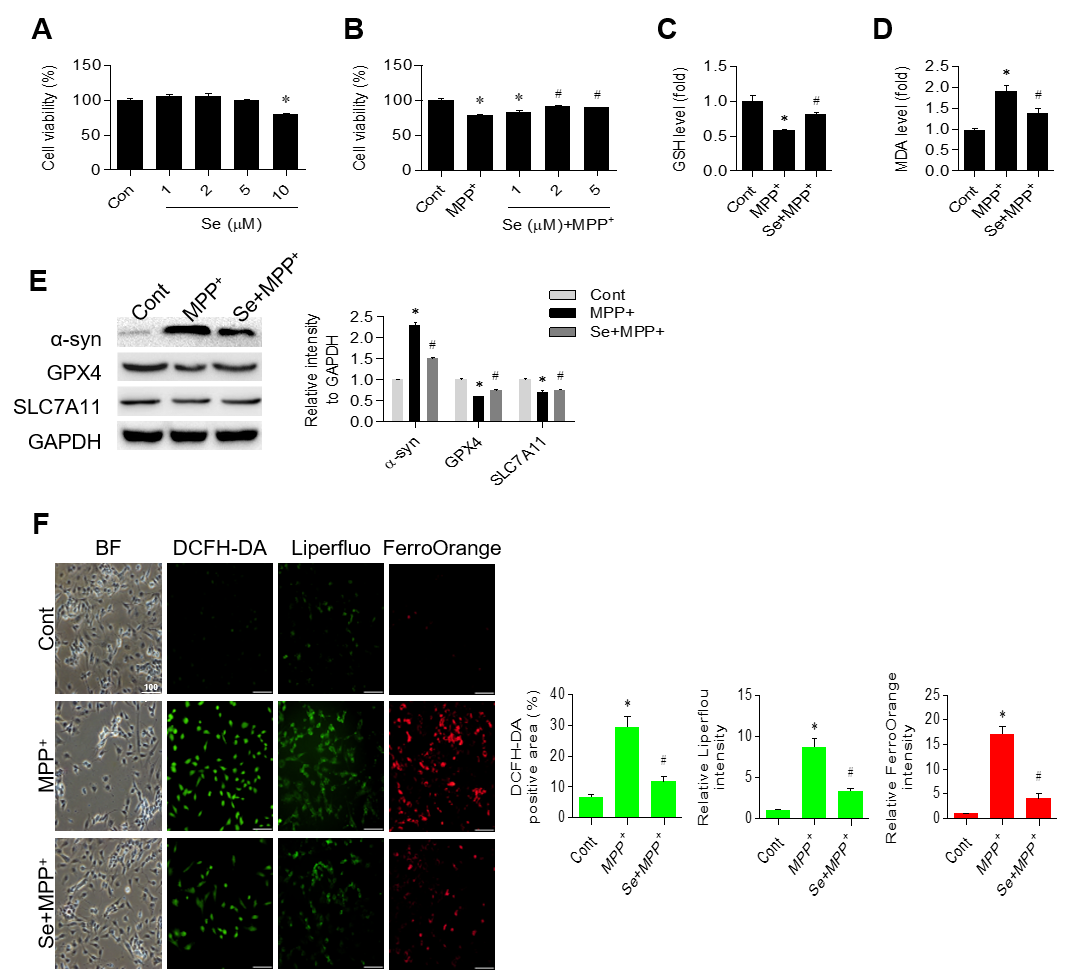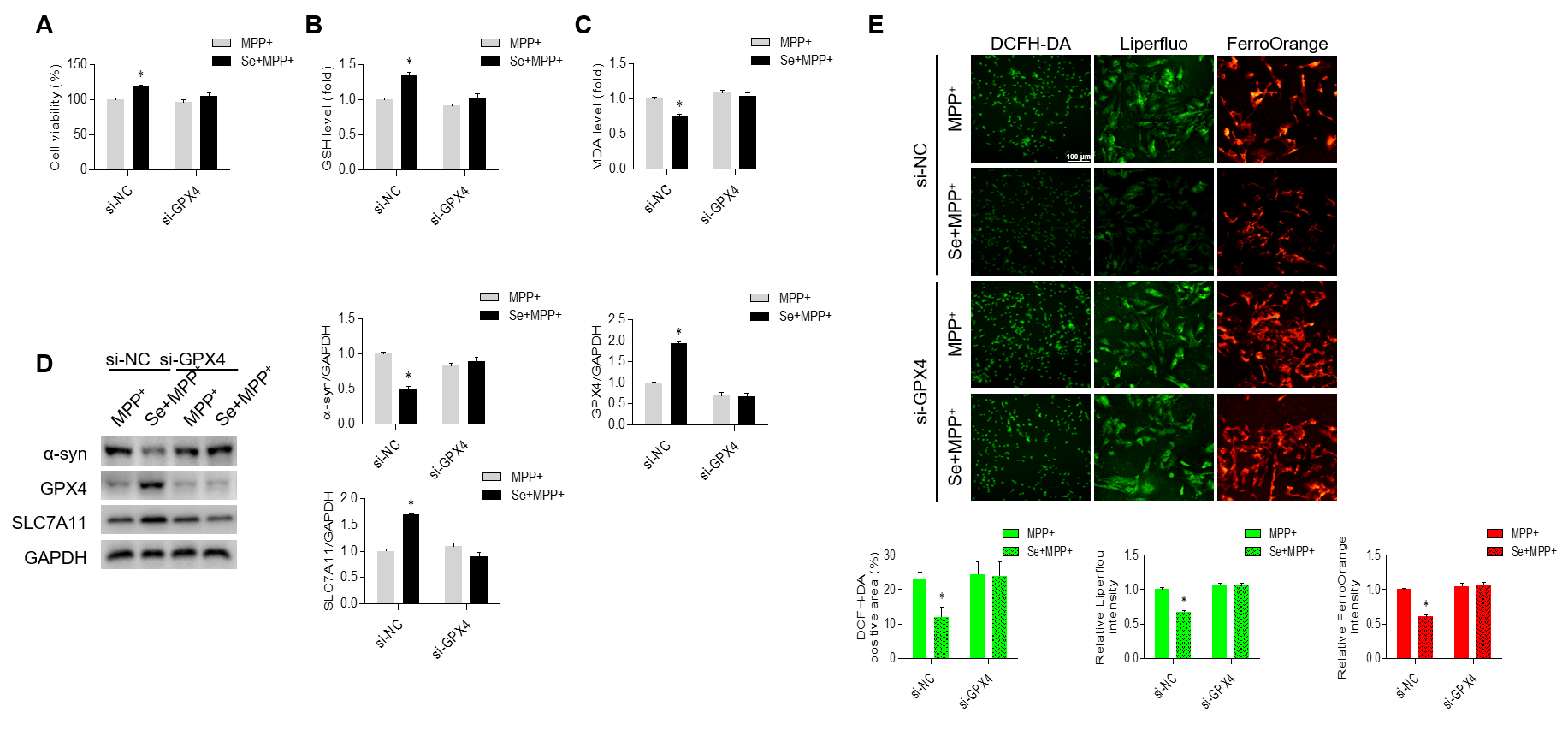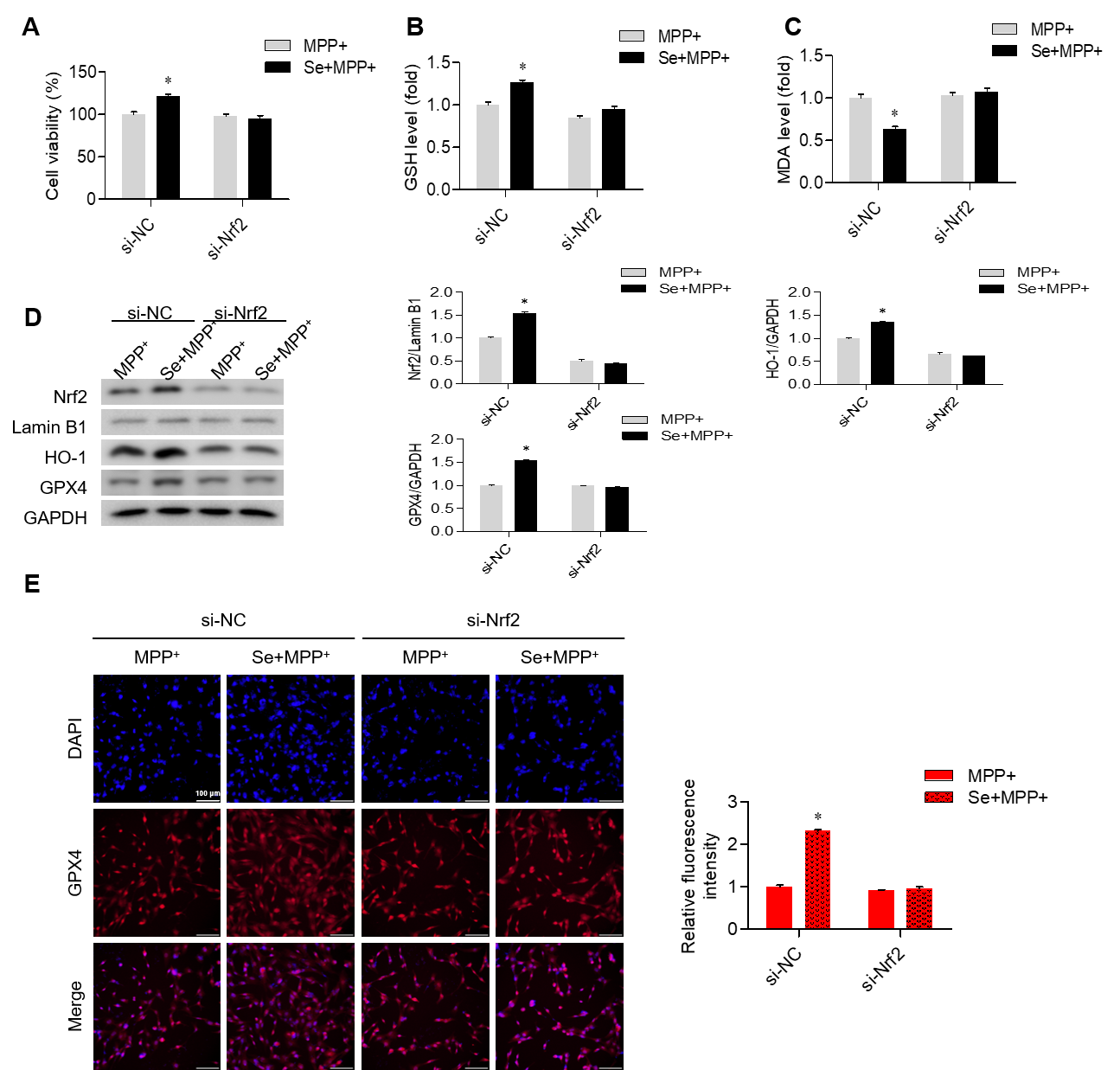Objective: The objective of this study is to explore the protective properties of selenium in an in vitro PD model, especially focusing on its underlying mechanism through the inhibition of ferroptosis.
Background: Ferroptosis is a recently recognized form of non-apoptotic regulated cell death, characterized by lipid peroxidation and iron overload. Selenium, an essential trace mineral with antioxidant activity, is involved in the synthesis of glutathione peroxidase 4 (GPX4), a key regulatory factor in ferroptosis. GPX4 containing selenium can protect interneurons from ferroptosis.
Method: A 1-methyl-4-phenylpyridimium (MPP+)-induced neurotoxicity model was established with retinoic acid (RA)-differentiated SH-SY5Y cells. Cell viability was determined by MTT. Western blotting was performed to determine the levels of ferroptosis markers such as GPX4 and solute carrier family 7 member 11 (SLC7A11), nuclear factor erythroid 2–related factor 2 (Nrf2), and ꭤ-synuclein. Intracellular and lipid reactive oxygen species (ROS) and intracellular iron levels were measured using DCFH-DA, Liperfluo, and FerroOrange. The protective mechanism of selenium was tested with the silencing of GPX4 and Nrf2 in the MPP+-treated SH-SY5Y cells.
Results: Selenium reduced the MPP+-induced loss of cell viability (figure 1). SH-SY5Y cells exposed to selenium with MPP+ exhibited decreased expression of ꭤ-synuclein and SLC7A11 and increased expression of GPX4 with those exposed to MPP+ alone (figure 1). Selenium decreased intracellular and lipid ROS and intracellular iron levels in the MPP+-treated SH-SY5Y cells (figure 1). However, siRNA-mediated downregulation of GPX4 significantly attenuated the protective effects introduced by selenium (figure 2). Nrf2 silencing attenuated the GPX4-dependent ferroptosis inhibition by selenium in the MPP+-induced PD model (figure 3).
Conclusion: Our findings revealed the protective roles of selenium in a model of PD pathogenesis. Selenium rescued the toxic effect of MPP+ on dopaminergic neuronal cell death via inhibition of ferroptosis-associated oxidative stress, possibly through modulation of the Nrf2/GPX4 signaling pathway. Targeting the Nrf2/GPX4 axis to modulate ferroptosis is a feasible strategy for preventing and decelerating PD-like neurodegeneration.
To cite this abstract in AMA style:
YJ. Jung, H. Choi, E. Oh. Selenium mitigates ferroptosis-mediated dopaminergic cell death by regulating the Nrf2/GPX4 pathway: Implication for Parkinson’s disease [abstract]. Mov Disord. 2023; 38 (suppl 1). https://www.mdsabstracts.org/abstract/selenium-mitigates-ferroptosis-mediated-dopaminergic-cell-death-by-regulating-the-nrf2-gpx4-pathway-implication-for-parkinsons-disease/. Accessed January 7, 2026.« Back to 2023 International Congress
MDS Abstracts - https://www.mdsabstracts.org/abstract/selenium-mitigates-ferroptosis-mediated-dopaminergic-cell-death-by-regulating-the-nrf2-gpx4-pathway-implication-for-parkinsons-disease/



